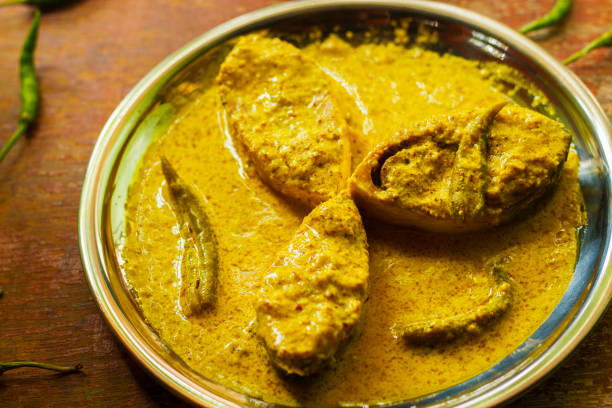Sauce and gravy shortcuts that hold up under reheating
Reliable sauces and gravies can make hosting easier when timelines are tight and leftovers are likely. This article outlines practical shortcuts for mealplanning, makeahead prep, storage, and reheating so sauces retain texture and flavor across scheduling, batchcooking, and cleanup.

Sauce and gravy work often decide how leftovers taste the next day, so choosing methods that survive cooling, storage, and reheating is practical for any host. This guide focuses on simple shortcuts and techniques that preserve texture and flavor through portioning, carving, and serving, while addressing foodsafety, timelines, and cleanup concerns. Read on for step-by-step explanations and tips you can fold into your prep and hosting plan.
How to fit sauces into mealplanning and scheduling
When you build a timeline for a holiday meal, treat sauces and gravies like dishes that need their own prep slot. Start by mapping when the turkey or roast is carved and when sides will be plated so you can plan reheating cycles: some sauces reheat better in low, moist heat while others are fine with quick stovetop attention. Include time for cooling before storage and label containers with dates and contents during portioning. These small scheduling steps make batchcooking and cleanup smoother and reduce last-minute juggling when hosting.
Add sauces to your mealplanning in the same way you add sides: assign them to a prep day or to the makeahead list. That reduces pressure on the service day and gives you a buffer for tweaks after a quick taste test.
Which makeahead sauces hold up to reheating?
Starch-thickened gravies (using flour or cornstarch) and reductions based on stock or wine often tolerate reheating well if handled correctly. Emulsified sauces that depend on butter or cream may break if overheated, so cool them gently and rewarm over low heat, whisking in small amounts of liquid to re-emulsify if needed. Tomato-based sauces and many pan sauces also reheat robustly and benefit from a rest in the fridge, which can sharpen flavors.
For makeahead prep, keep a concentrated base (reduced stock, pan drippings, or a demi-glace substitute) and thin to finish when reheating. This approach improves scaling, saves space in storage, and makes last-minute plating easier.
Storage, cooling, and foodsafety for sauces
Rapid cooling is important for foodsafety and for preserving sauce texture. Divide large batches into shallow containers for faster cooling, and refrigerate within two hours of cooking. Label containers with contents and date to manage leftovers. For longer storage, freeze sauces in portioned containers or ice-cube trays for single-serve amounts. When freezing, leave headspace to allow expansion and wrap containers tightly to prevent freezer burn.
When thawing, move sauces to the refrigerator overnight rather than leaving at room temperature. Reheat thoroughly until steaming, and stir frequently to ensure even temperatures and avoid hotspots that can damage emulsions or thickeners.
Batchcooking, scaling, and portioning tips
If you’re batchcooking, scale recipes by weight rather than volume when possible to reduce rounding errors that change texture. Keep a basic ratio in mind: for roux-thickened sauces, equal parts fat and flour by weight, then add liquid until you reach desired thickness. Portion sauces into serving sizes that match your plating plan—this speeds reheating and prevents repeated warming cycles that degrade quality.
When scaling for a crowd, make several small batches instead of one enormous pot; smaller batches cool faster and are easier to fix if a sauce needs adjustment. Use labels for portioning to streamline service and reduce waste among leftovers.
Carving, gravy, sides, and plating strategies
Coordinate carving and gravy service so juices and drippings can be captured for quick pan sauces. Reserve reserved pan juices and deglaze with stock or wine as the basis for gravy; finishing with a small pat of cold butter or a splash of cream at the end preserves sheen and mouthfeel. Plan plating for optimal sauce distribution—serve heavy gravies in a boat or ladle small amounts across carved meat to avoid soggy sides.
Think about texture contrasts on the plate. Lighter sauces pair well with crisp sides, while richer gravies complement creamier elements. Proper portioning at plating time keeps leftovers more attractive for reheating.
Cleanup, leftovers, reheating, and hosting realities
Accept that some cleanup is part of hosting, and organize tools to speed it up: strainers, heatproof containers, and a whisk make reheating and finishing faster. Reheat sauces gently on the stovetop or in a bain-marie to reduce risk of breaking emulsions; use a microwave only for small portions and stir frequently. Keep a small bowl of warm stock or water nearby to thin sauces that become too thick after refrigeration.
For leftovers, label containers with contents and date, and plan meals that reuse sauces—cooled pan gravy becomes a base for stews, or a tomato-based sauce can be stretched into soups or braises. Proper storage and mindful reheating preserve both taste and foodsafety.
Conclusion
Selecting the right shortcuts for sauces and gravies—concentrating bases, portioning for faster cooling, and reheating gently—helps maintain texture and flavor across makeahead prep and leftovers. Thoughtful scheduling, batchcooking choices, and simple plating strategies reduce last-minute stress and keep serving quality consistent while managing cleanup and foodsafety considerations.






